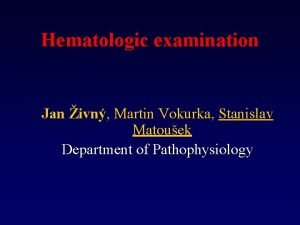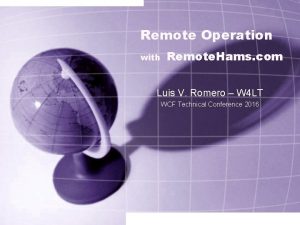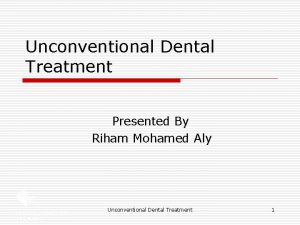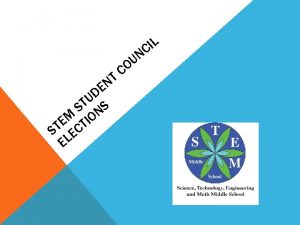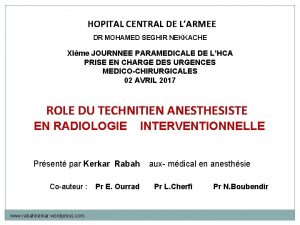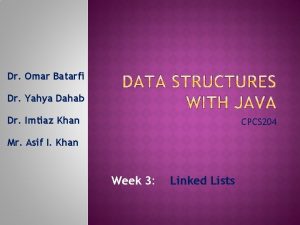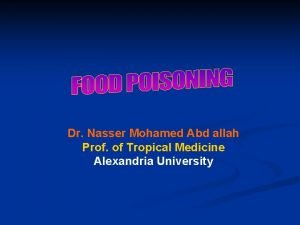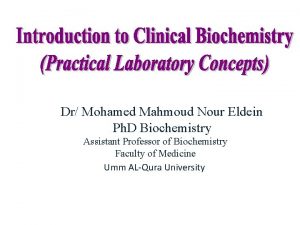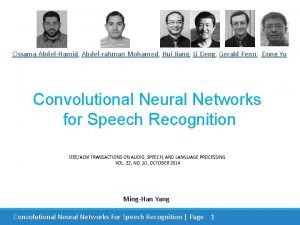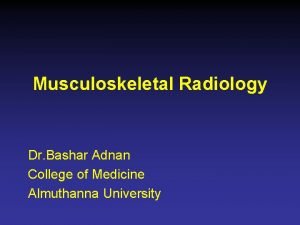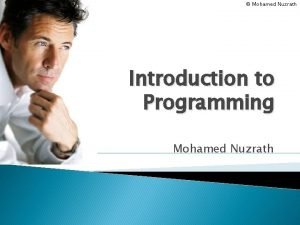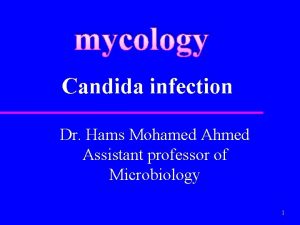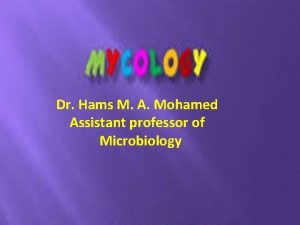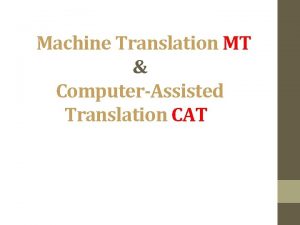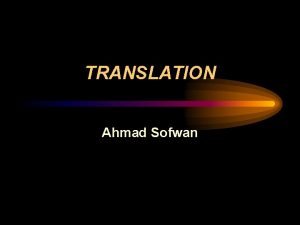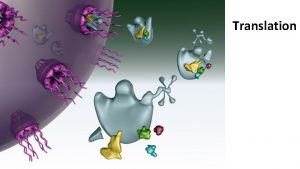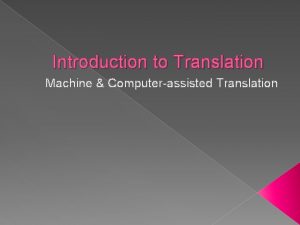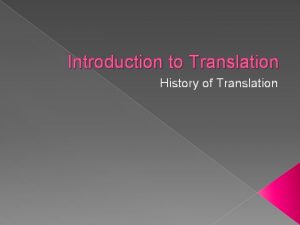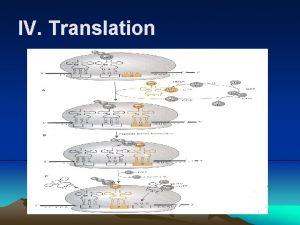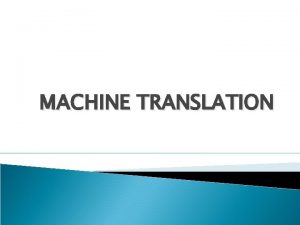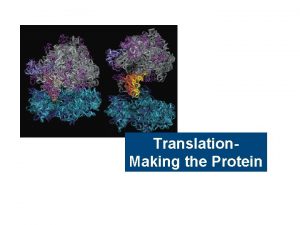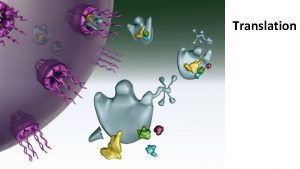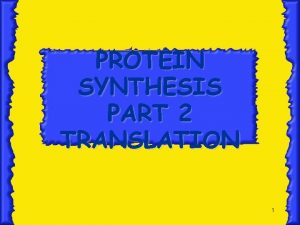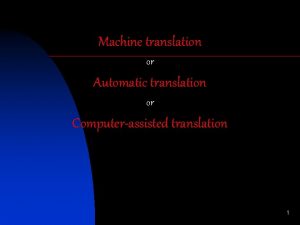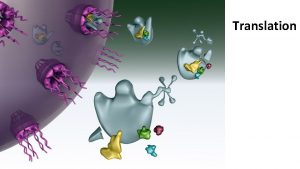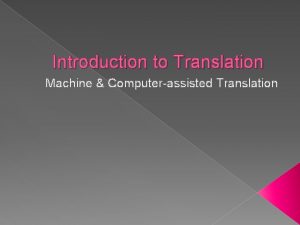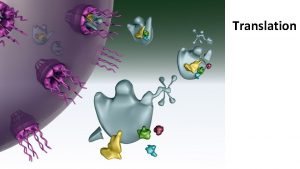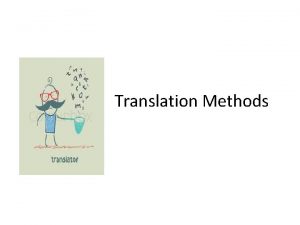DNATranscription and Translation Dr Hams M A Mohamed
























- Slides: 24

DNA-Transcription and Translation Dr. Hams M. A. Mohamed Associated professor of Microbiology

Transcription of DNA Key Steps �Transcription divided into Initiation (promoters), elongation, and termination. �*Transcription is the process in which a gene's DNA sequence is copied (transcribed) to make an RNA molecule. �*RNA polymerase is the main transcription enzyme. �Transcription begins when RNA polymerase binds to a promoter sequence near the beginning of a gene (directly or through helper proteins).

�RNA polymerase uses one of the DNA strands (the template strand) as a template to make a new, complementary RNA molecule. �Transcription ends in a process called termination. Termination depends on sequences in the RNA, which signal that the transcript is finished.

Overview of transcription �Transcription is the first step in gene expression, in which information from a gene is used to construct a functional product such as a protein. The goal of transcription is to make a RNA copy of a gene's DNA sequence. For a protein-coding gene, the RNA copy, or transcript, carries the information needed to build a polypeptide (protein or protein subunit). Eukaryotic transcripts need to go through some processing steps before translation into proteins.


Stages of transcription �Transcription of a gene takes place in three stages (Mainly in prokaryotes): initiation, elongation, and termination. � 1 -Initiation. RNA polymerase binds to a sequence of DNA called the promoter, found near the beginning of a gene. Each gene (or group of co-transcribed genes, in bacteria) has its own promoter. Once bound, RNA polymerase separates the DNA strands, providing the single-stranded template needed for transcription.

2 -Elongation. One strand of DNA, the template strand, acts as a template for RNA polymerase. As it "reads" this template one base at a time, the polymerase builds an RNA molecule out of complementary nucleotides, making a chain that grows from 5' to 3'. The RNA transcript carries the same information as the non-template (coding) strand of DNA, but it contains the base uracil (U) instead of thymine (T).


3 -Termination. Sequences called terminators signal that the RNA transcript is complete. Once they are transcribed, they cause the transcript to be released from the RNA polymerase

Eukaryotic RNA modifications In bacteria, RNA transcripts can act as messenger RNAs (m. RNAs) right away. In eukaryotes, the transcript of a protein-coding gene is called a prem. RNA and must go through extra processing before it can direct translation. �Eukaryotic pre-m. RNAs must have their ends modified, by addition of a 5' cap (at the beginning) and 3' poly-A tail (at the end).

�Many eukaryotic pre-m. RNAs undergo splicing. In this process, parts of the pre-m. RNA (called introns) are removed, and the remaining pieces (called exons) are stuck back together to be mature m-RNA.

Translation of RNA �Translation involves “decoding” a messenger RNA (m. RNA) and using its information to build a polypeptide, or chain of amino acids. � in translation, the codons of an m. RNA are read in order (from the 5' end to the 3' end) by molecules called transfer RNAs, or t. RNAs. �Each t. RNA has an anticodon, a set of three nucleotides that binds to a matching m. RNA codon through base pairing.

�t. RNAs bind to m. RNAs inside of a protein-and-RNA structure called the ribosome. As t. RNAs enter slots in the ribosome and bind to codons, their amino acids are linked to the growing polypeptide chain in a chemical reaction. The end result is a polypeptide


Steps of translation 1 -Initiation �In order for translation to start, . These include: �A ribosome (which comes in two pieces, large and small) �An m. RNA with instructions for the protein we'll build �An "initiator" t. RNA carrying the first amino acid in the protein,

�During initiation, these pieces must come together in just the right way. Together, they form the initiation complex, the molecular setup needed to start making a new protein. �Inside your cells (and the cells of other eukaryotes), translation initiation goes like this: first, the t. RNA attaches to the small ribosomal subunit. Together, they bind to the 5' end of the m. RNA by recognizing the 5' GTP cap (added during processing in the nucleus). Then, they "walk" along the


�In bacteria, the situation is a little different. Here, the small ribosomal subunit doesn't start at the 5' end of the m. RNA and travel toward the 3' end. Instead, it attaches directly to certain sequences in the m. RNA. These Shine-Dalgarno sequences come just before start codons

Translation in prokaryotic

2 -Elongation �this "middle" stage of translation by its handy name: elongation is when the polypeptide chain gets longer. �Amino acid code-carrying t. RNA starts out in the middle slot of the ribosome, called the P site. Next to it, a fresh codon is exposed in another slot, called the A site. The A site will be the "landing site" for the next t. RNA, one whose anticodon is a perfect (complementary) match for the exposed codon.


3 -Termination �Translation ends in a process called termination. Termination happens when a stop codon in the m. RNA (UAA, UAG, or UGA) enters the A site. �Stop codons are recognized by proteins called release factors, which fit neatly into the P site. Release factors mess with the enzyme that normally forms peptide bonds: they make it add a water molecule to the last amino acid of the chain. This reaction separates the chain from the t. RNA, and the newly made protein is released.

What's the difference between, , ,

 Sferocytosis
Sferocytosis Remotehams forum
Remotehams forum Hams alcohol
Hams alcohol Hams alcohol taper
Hams alcohol taper Handiham
Handiham Example of semantic translation
Example of semantic translation Transformations of functions
Transformations of functions Cisco voice translation-rule
Cisco voice translation-rule Noun phrase example
Noun phrase example Riham mohamed aly
Riham mohamed aly Mohamed dahoui
Mohamed dahoui Lodacain
Lodacain Mohamed kossentini
Mohamed kossentini Mohamed homayed death
Mohamed homayed death Mohamed computer technology
Mohamed computer technology Mohamed el merouani
Mohamed el merouani Mohamed seghir nekkache
Mohamed seghir nekkache Mohammad diab md
Mohammad diab md Yahye mohamed omar
Yahye mohamed omar Professor nasser mohamed
Professor nasser mohamed Dr mohamed eldeib
Dr mohamed eldeib Power rating
Power rating Mohamed bouhicha
Mohamed bouhicha Abdelrahman mohamed
Abdelrahman mohamed Dr mohamed bashar shala
Dr mohamed bashar shala
